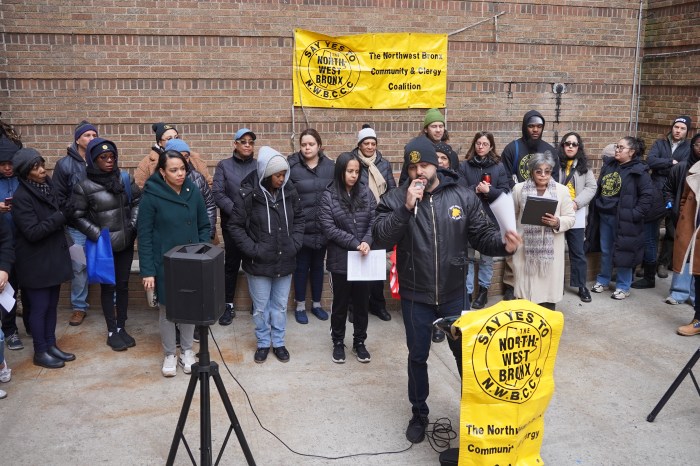Artist Don Freeman is probably best known for his heartwarming tale about a small stuffed bear who is the center of the 1968 classic children’s book “Corduroy.”
But Freeman’s body of work extends beyond the gentle, colorful illustrations that graced his popular children’s books.
Freeman, who died in 1978, lovingly chronicled life in New York City for decades — from quiet scenes of a child playing with her doll on a fire escape to the spectacle of Broadway shows and people riding the subways.
A new exhibit at the Museum of the City of New York, “A City for Corduroy: Don Freeman’s New York,” provides a sweeping look at his life’s work.
“He always wanted to come to New York, that was his big dream,” said Freeman’s son, Roy. “He loved the spirit, the diversity, the humanity, and just life as it is in New York.”
Even after moving back to his native California, Freeman returned to New York on a regular basis, his son said.
“He would say ‘One tree is enough for me, I need to see more people,’” Roy Freeman recalled.
Don Freeman was also a musician, and supported himself by playing trumpet in bands while studying at The Art Students League of New York.
The exhibit is arranged in three sections: City Life, Stage Life and Corduroy and Friends.
“He was fascinated with New York theater — not just what happened on stage, but behind the scenes,” said Whitney W. Donhauser, Ronay Menschel director and president of the Museum of the City of New York. “He really captured what he walked around and saw.”
Freeman’s work was featured in the poster and Playbill art for the original 1947 Broadway production of “A Streetcar Named Desire.” His drawings ran in publications including the New York Herald Tribune, The New York Times and Theatre Magazine.
Stagehands and theater cleaners were as much an object of his interest as the stars.
“He thought everyone was equally important to making the magic of theater,” said Morgen Stevens‐Garmon, who curated the exhibit.
Freeman was known for carrying a sketchbook wherever he went.
“He bought notebooks that didn’t look like sketchbooks,” Stevens-Garmon said, so people wouldn’t know he was drawing.
His artwork “captured the energy and the chaos of the city,” as well as the stillness and quiet amid the swirl of the urban landscape, she said.
Many of the pieces in the exhibition come from the museum’s own collection of Freeman’s work, Donhauser pointed out. The Corduroy artwork was loaned by the Kerlan Collection, the Children’s Literature Research Collection at the University of Minnesota.
He wrote or illustrated close to 40 books, often collaborating with his wife, Lydia. Freeman’s characters appealed to parents and their children: Norman the Doorman, a mouse who stands sentry at the art museum; Hattie, the backstage bat who lived at the Lyceum Theatre; and Maestro Petrini, the mouse who works at the Metropolitan Opera.
But it was Corduroy, the sweet stuffed bear in need of a button for his green overalls, who has captured the imagination of readers for 50 years.
A young girl named Lisa hopes to purchase the bear from a department store but leaves empty-handed because her mother cannot afford it. Corduroy spends the night hunting for a button in the store to replace the one that was lost, thinking that might help him find a friend and a home
While his quest for a new button is unsuccessful, Lisa returns the next day with her own savings and purchases Corduroy.
Ironically, publishers rejected the book several times before it was printed in 1968.
“He didn’t realize the immense popularity that would come,” Roy Freeman said of his father. “He was just glad that it finally became a book.”
It was also notable at the time for having an African-American child, Lisa, at the center of the story.
Freeman said he hears from readers who say they read the book as a child, shared it with their children and now their grandchildren.
“It was published 50 years ago but it’s timeless and still resonates,” said Donhauser. “Sometimes it’s the simple stories that have the greatest longevity and actually speak to many generations, which is really powerful.”
Don Freeman died 10 years later while working on a followup book titled “A Pocket for Corduroy.”
Roy Freeman said his father would have been thrilled with the exhibit.
“This show combines Corduroy and the city he loved,” Freeman said. “It’s just perfect.”
If you go: "A City for Corduroy: Don Freeman’s New York" runs through June 23 at the Museum of the City of New York, 1220 Fifth Ave. For times and ticket information, go to mcny.org.





































